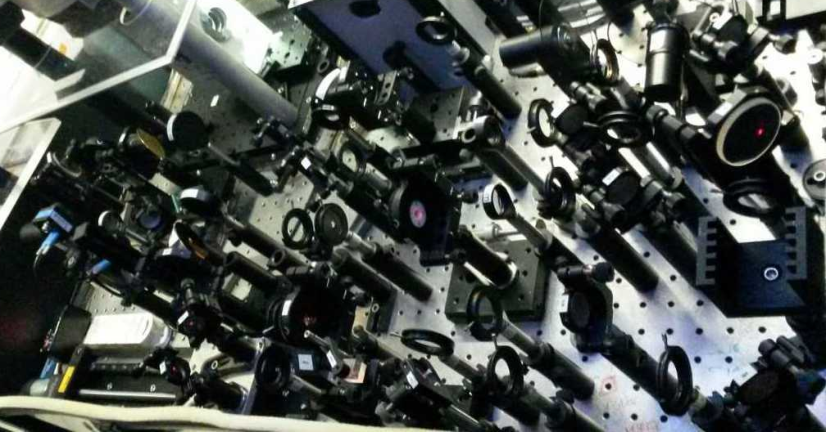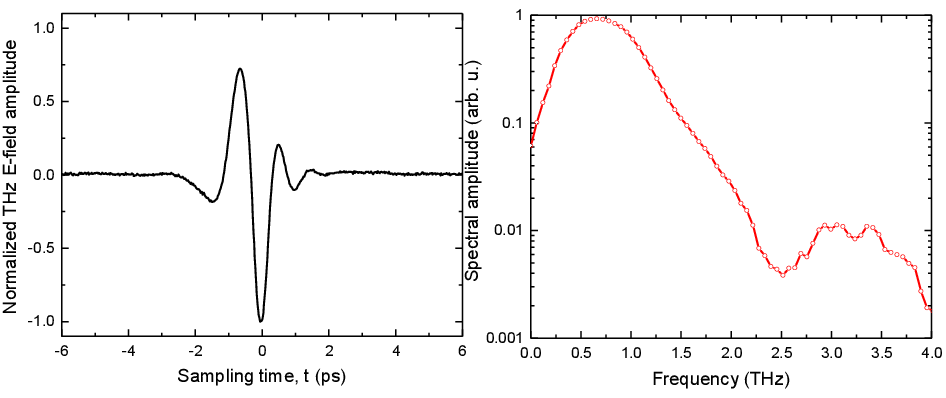THz spectroscopy
Many commercial products surround us in our everyday lives that use almost every portion of electromagnetic (EM) radiation, ranging from X-rays to radio waves. However, a significant part of the EM spectrum, known as the THz-gap, lacks devices although applications of that part are numerous, such as non-invasive testing and detection, high-speed wireless communication, biological applications, etc. Apart from all these applications, THz-radiation is also very useful to understand and characterize material systems for fundamental research.
Terahertz radiation is used to trigger, control and detect material properties with EM-fields in the meV range, this corresponds to photon frequencies between 0.1-10 THz. In almost any many-body system, there are electronic states in the conduction band that have an energy difference in the meV range and can therefore be excited resonantly and simultaneously detected with THz radiation with a time-resolution in picoseconds. To do so, we employ THz time-domain spectroscopy (TDS) which enables the measurement of THz fields in time using femtosecond lasers with regenerative amplifier systems.
In our THz setup, we use non-centrosymmetric III-V semiconductor (GaP, ZnTe) crystals to generate single cycle THz pulses in the lower THz regime (up to ~3 THz = 12 meV) via optical rectification while the detection mechanism is based on free space electro-optic sampling. An overview of the setup is shown below along with the THz pulse and the corresponding frequency spectrum.

